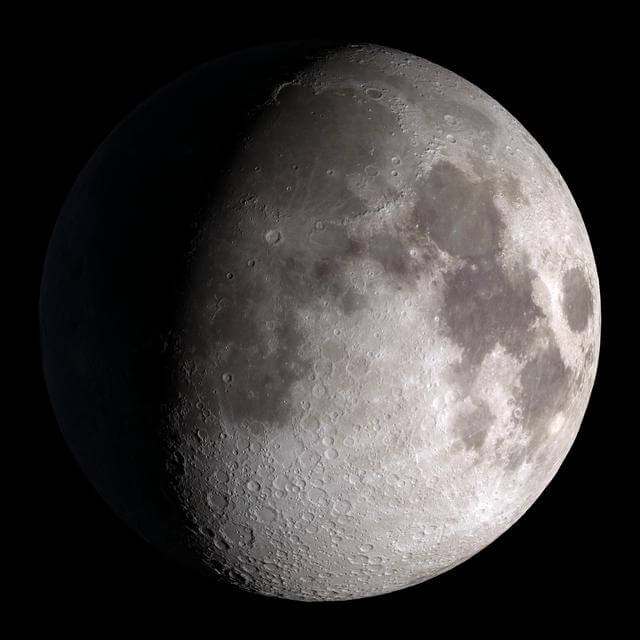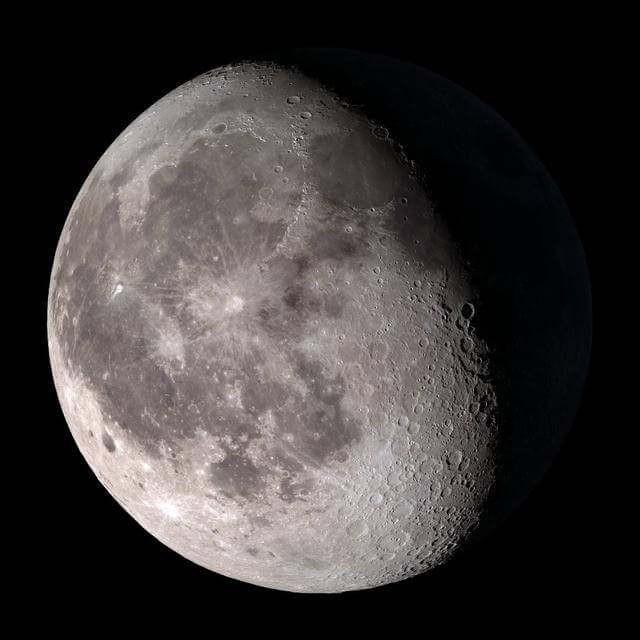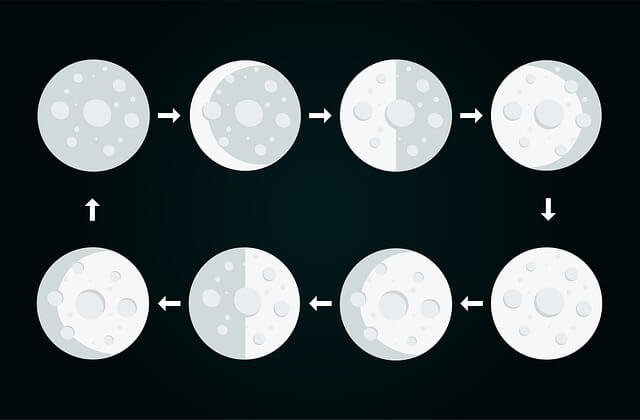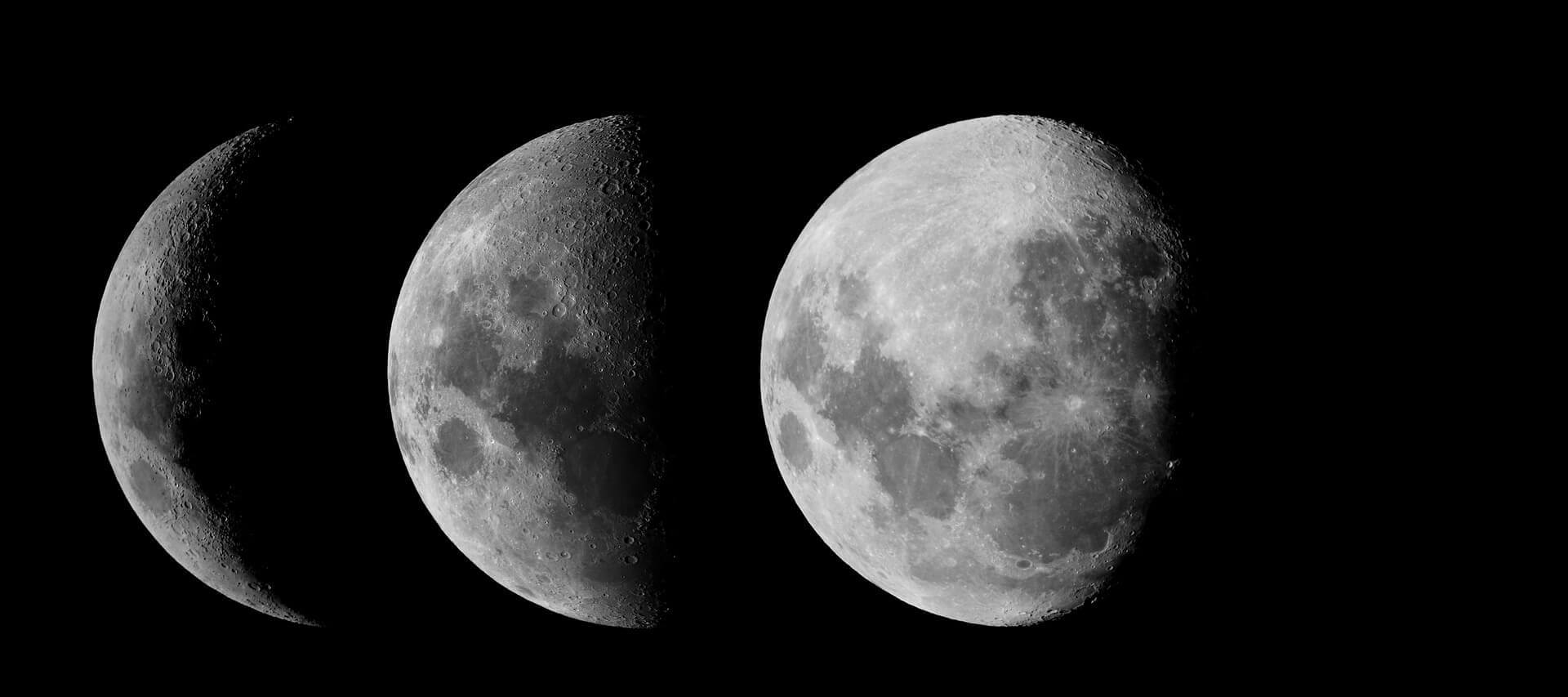What does it mean when someone mentions a “gibbous” moon? A gibbous moon is any moon that appears more than half illuminated but is less than full. The word “gibbous” roots from the meaning “hump-backed,” which is just how the Moon appears during its gibbous phase.
One lunar month can be divided into four primary phases and four secondary phases. While the gibbous phase is among the secondary phases of the Moon, it occupies about 14 days of the month in total.
There are four kinds of lunar months – Anomalistic, Nodical, Sidereal, and Synodical, all varying in their length and time period needed to complete one cycle. Among these, the synodical month by far is the most used in calendars and for other purposes. Consisting of about 29.5 days, this cycle reflects the moon’s length of time to circle the entire Earth, using the Sun as the reference.
What Is a Waxing Gibbous Moon?
Waxing, by definition, means to increase in size, while gibbous relates to being convex, an oval to round shape greater than a semicircle but less than a circle. We can see a waxing gibbous moon phase between the first quarter phase of the Moon and the full moon phase.

What Is a Waning Gibbous Moon?
Waning, by definition, means to decrease. This secondary phase of the moon is found between the full moon and the last quarter primary moon phases when the Sun’s illumination on moon slowly starts to decrease. Like the waxing phase, this phase alone takes 7 days to complete, with a 3 days gap for the full moon phase between waxing and waning. Synodical waxing comes before waning.

Waxing Gibbous Vs. Waning Gibbous
Waxing gibbous starts right after 50% of the moon is illuminated. It can be seen early in the time of day, that is, in the afternoon, shortly after moonrise. It can be seen rising in the east while the Sun eventually descends into the west. It is far easier to catch the sight of a waxing moon as it appears early through the day and stays until after midnight and also because as the moon covers the days of its waxing phase, the moon’s illumination keeps increasing from 50.1% to 99.9%. As the size keeps getting bigger, the moon keeps appearing brighter.
But what comes after Waxing gibbous? The next phase that appears is the primary phase, called the full moon phase. At this point, the moon appears huge and brightest as observed from the Earth. This phase depicts that moon and Sun are aligned in a position opposite the sides of the Earth. As the moon’s dayside facing us waxes to 98-99%, it can become challenging to differentiate it from a full moon. The full moon rises just after sunset.

Waning gibbous follows right after. The moon appears late at night and can be seen till early in the morning; therefore somewhat still possible to catch its sight. While the waxing moon can be seen rising even before the sunset, the waning moon rises later at night, eventually ascending over the eastern horizon as the night falls dark. Sometimes, surprisingly, the waning moon appears in the daytime. On other days you might also catch its sight late in the evening, a few hours after sunset- appearing like a misshapen, distorted glowing red ball in the sky. This can occur when it’s near the horizon.
As a waning moon appears late at night, it also disappears late in the morning, much later after sunrise.
How To Tell If The Moon Is Waxing or Waning
The most common difference between the two states is the area of illumination of the moon facing the Earth. In the waxing phase, illumination increases, appearing as if the moon is getting ‘bigger’ until it reaches the full moon phase. In contrast, we can observe the waning moon and see it gradually shrinking day by day until it finally reaches the last quarter phase.
In the waxing phase, the sunlit, daylight part of the moon facing the Earth is in the west. On the other hand, the waning gibbous phase is towards the east. In other words, when the moon is waxing, in the northern hemisphere, the shadowed part of the moon will appear towards the left, and the shadowed part will appear on the right, considering the moon is waning. The situation gets vice versa for the southern hemisphere. It is important to note that the moon phases will remain the same all around the world, and the same percentage of the moon will be seen illuminated, irrespective of the part of earth you are standing at.
In short, it is not hard to discriminate between the two gibbous moon phases. No matter where you are on Earth, it is waxing if you search for the moon at sunset and can see it. If you look for the moon, but it isn’t visible until a few hours after sunset, it is definitely waning.
What Does The Gibbous Symbolize
The waxing moon symbolizes the final stretches of the works and projects you have been working on. You can finally see the end of the tunnel, and it’s to wind up the work now, for good. This is high time to finish what you started before the moon reaches full in order for you to feel complete and satisfied with your hard work. This is time to enjoy your achieved tasks.
A waxing gibbous moon affects us in a completely different way. Under its effect, we feel the urge to change directions of our lives and to outgrow our old thoughts and habits that are keeping us down, since the moon specifies a whole lot of effort you have been putting in your life to make things yet things are not turning as you expect them to be. It teaches to let go and reform.
The phases of the moon have ways to communicate with us spiritually. So, out of all the amazing things it teaches, the waning moon teaches us patience because you don’t seem to manifest your desired results at this point in your life. After that, it wants you to pay attention to your inner energy to achieve better self-awareness and emotional stability. It even directs you to change your mindset for better productivity and effectiveness, so it wouldn’t be wrong to say this phase is spiritually positive. Therefore, try as much as possible to take advantage of these 7 days to evolve and become a better version of yourself.
Conclusion
Because waxing and waning are just intermediate stages of the moon, and although they carry their significance, there is no symbol in the calendar representing these. Only symbols for primary phases can be seen reflecting the moon’s appearance. It is important to note that these beautiful phases of the moon are merely a result of the moon’s rotation on its axis and its revolving around the Earth, at about a distance of 384 400 km (238 855 miles) from the Earth. At the same time, the Earth simultaneously revolves around the Sun. The difference in the direction of sunlight drawing over the moon’s surface has the ability to put the moon into a position of going through various, breathtakingly beautiful phases.

